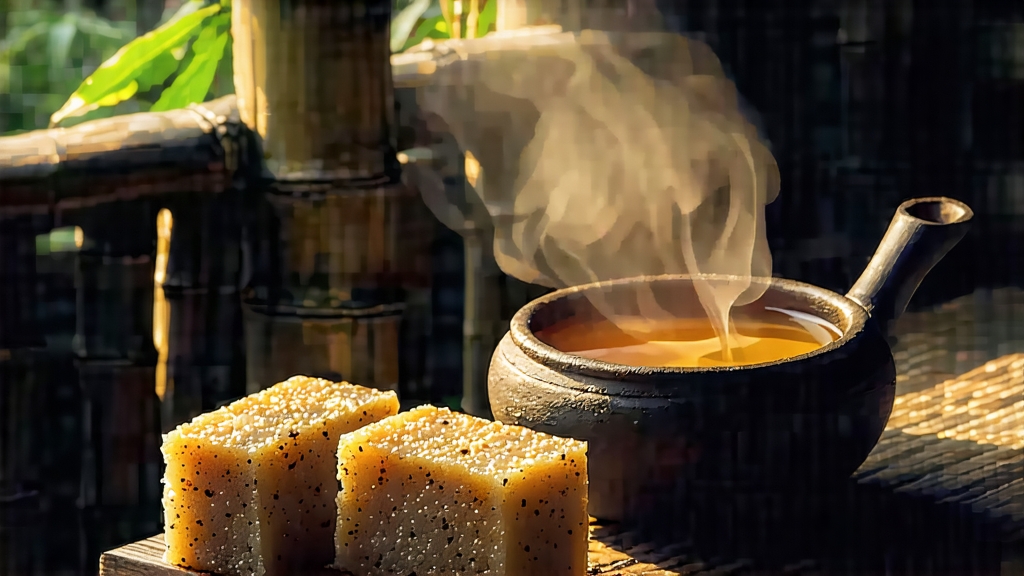
Tucked away in the humid mountains of southern Guangxi, Liu Bao tea has been quietly fermenting for five centuries while its more famous cousins—Pu-erh and Anhua Dark—stole the international spotlight. To the uninitiated, Liu Bao looks like rough charcoal briquettes wrapped in straw, yet once unraveled it releases a velvet liquor that Chinese dock-workers once sipped to survive typhoons and British clipper captains traded for silver. This is the story of how a border-region necessity became a collector’s obsession, and why a single bamboo basket of 1958 Liu Bao now commands more than a Bordeaux first-growth at auction.
Historical Roots
The name “Liu Bao” literally means “six forts,” referring to the six stockades that protected tea caravans heading for the port of Wuzhou. During the Ming Jiajing era (1522–1566), imperial edicts demanded that Guangxi supply “border tea” to pacify non-Han cavalry; compressed dark leaves traveled faster than silver and kept better than grain. By the Qing Qianlong period, Liu Bao had followed the Pearl River to Hong Kong, where it was re-packaged as “cooling tea” for feverish sailors. British records from 1844 list “Lew-pow” alongside Lapsang Souchong at Canton auctions, priced at one-third the cost of Keemun yet double that of Yunnan tuo cha. The opening of the Wuzhou–Hong Kong steamship route in 1897 turned Liu Bao into a currency itself: warehouse receipts were mortgaged, gambling debts were settled, and entire clans financed weddings by slicing bricks into measured slivers.
Micro-Terroirs and Leaf Styles
Guangxi’s subtropical karst hills trap morning fog, creating a diurnal swing of 12 °C that thickens leaf cuticles. Within the Liu Bao designation, three micro-zones matter most: the high-altitude Dazhushan (300–800 m) where wild Camellia sinensis var. assamica trees develop camphor notes; the red-clay foothills of Shuangqiao that yield golden buds reminiscent of Dian Hong; and the riverside terraces of Liudong where mineral-rich alluvium feeds broad leaves ideal for wet-pile fermentation. Traditional grades are not measured in buds but in “tiao” (strips): first-grade “Shen Cha” consists of one bud plus two leaves twisted into fish-hook shapes; third-grade “Gu Cha” uses mature four-leaf sprays that survive repeated steamings. A forgotten sub-style, “Hua Cha,” layers tea with night-blooming jasmine during the final drying, leaving ghost-like floral echoes that reappear decades later in the cup.
The Wet-Pile Alchemy
Unlike Pu-erh’s wòduī, Liu Bao’s “Liang Shui Fa” (cool-water method) begins with a midnight soak in mountain spring water at 18 °C. Tea is piled 70 cm high inside bamboo-lined pits; mist nozzles keep humidity at 85 % for 18 hours, just long enough to awaken thermophilic microbes without killing leaf enzymes. Workers then “turn the dragon” every 45 minutes, inserting cypress poles to vent heat and inject oxygen. On the third dawn, the pile is spread under reed mats where ambient yeasts finish a 36-hour secondary ferment, dropping leaf temperature from 55 °C to 29 °C. The result is a microbial consortium dominated by Aspergillus niger, Blastobotrys adeninivorans, and a unique strain of Bacillus subtilis christened “Wuzhou-7” by Guangxi University in 2011. These microbes secrete β-glucosidases that convert bitter flavonoids into sweet aglycones, giving Liu Bao its hallmark dried-longan sweetness within months rather than years.
Basket Aging, Not Cellaring
After fermentation, leaves are steamed, compressed into 50 kg bamboo baskets lined with wild banana leaf, and hoisted into riverside warehouses where humidity cycles between 65 % and 90 % with the monsoon. Here the tea “breathes” through 2 mm basket gaps, exchanging volatiles with camphor logs stacked nearby to repel insects. Every summer, master Chen Lianhua still climbs the rickety loft to rotate baskets 180 °, ensuring even micro-oxidation. Over decades, the camphor note integrates into a cool, mint-like top